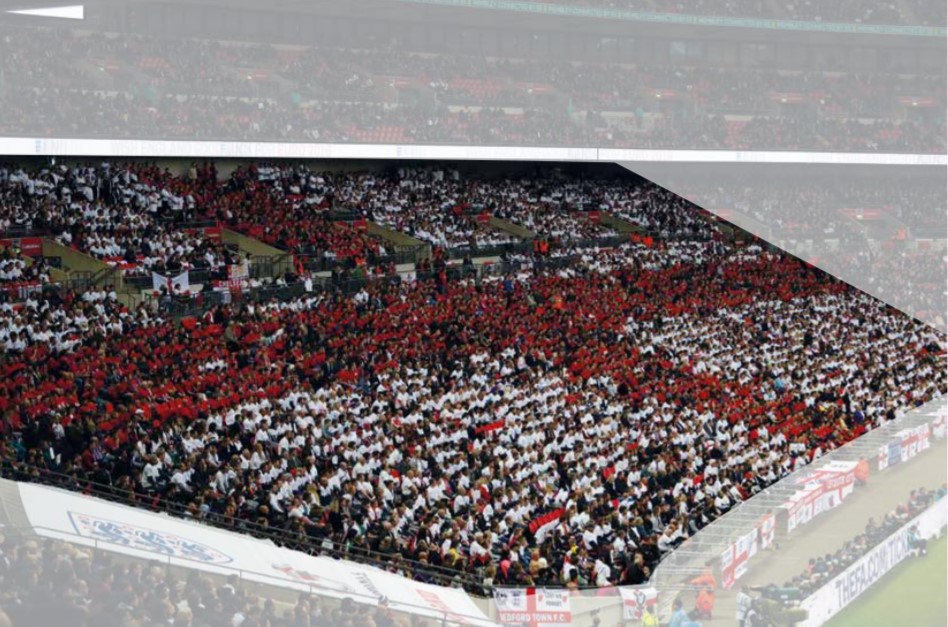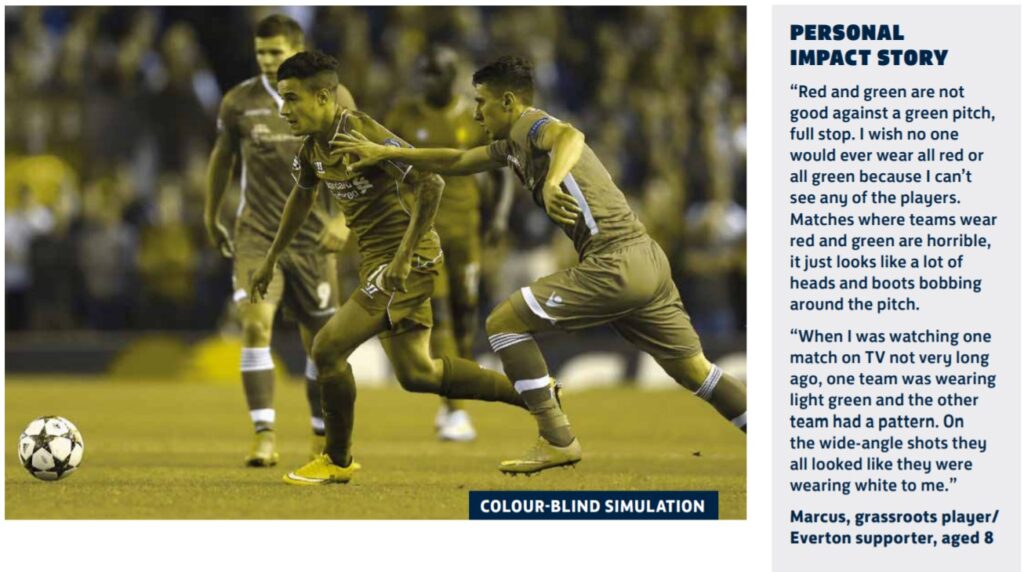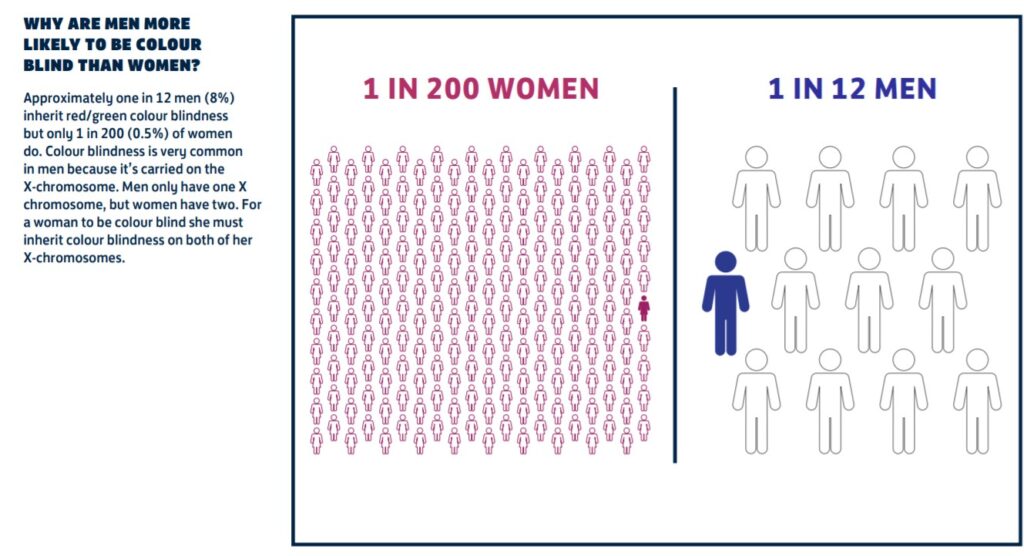Have you ever wondered why FIFA and other football government organizations are so strict with the colour of kit and the light / dark kit rule? This is not only for TV but also for colour blind people.
What is Colour Blindness?
Colour blindness is the inability to perceive colours normally. It is one of the world’s most common genetic conditions. However, colour blindness is under-recognised and poorly understood. We see colour through specialised nerve cells in our eyes called cones. We have three types of these cone cells which absorb red, blue or green light. These three cone types working together allow us to see the full visible spectrum but in colour blindness, one cone cell type doesn’t function properly. In about 25% of colour-blind people one cone cell type is virtually non-existent. So, while people with normal colour vision can see the full visible spectrum, people with colour blindness see many colours as the same.
Who is affected?
Worldwide, about 320 million people have some form of colour blindness. That’s equivalent to the population of the USA. In the UK there are almost three million colour-blind people. Put another way, enough to fill the 90,000-seater Wembley Stadium more than 30 times. In a full Wembley, at least 5,500 spectators will be colour-blind people.


Key Points
Shirt colours:
There should be good colour contrast between the shirt colours of both teams, the goalkeepers and the match officials.
However, what might seem to be good contrast to a person with normal colour vision, e.g. red against black, may have virtually no colour contrast to someone with colour blindness. So avoid the ‘problem’ kit combinations already mentioned and also note:
• Patterned shirts can complicate matters – as a general rule avoid both teams having the same colour on their shirts, even if one shirt has only a small element of that colour.
• If shirts have a pattern on one side, e.g. black and white stripes on the front and a plain back, remember to consider potential kit clashes for both sides of the shirt.
• Shirts with different-coloured sleeves can cause problems for spectators in long-distance, fast-moving TV shots. Different coloured sleeves should be treated as patterned kits.
• Where shirts are single colours which clash with the pitch, e.g. all red/all green/all orange, consider introducing a strongly contrasting colour across the shoulders and sleeves, e.g. white stripes, so that your players can be clearly seen against the pitch.
Plans in Action
Both the Irish (green) and Welsh (red) national rugby teams might be changing their traditional kit colours from 2027 onwards.
The sport’s governing body is teaming up with Colour Blind Awareness to look at ways to reduce problems for players, fans and officials alike, among them its own chairman Bill Beaumont.
That will include a new law being introduced to firm up previous measures announced by Beaumont on Colour Blind Awareness Day.
Around one in 12 men suffers some form of colour blindness with green and red providing the majority of the issues – numbers are far lower at around one in 200 among females.

“From our perspective, if you’re potentially limiting eight per cent of your male audience, that’s a huge number of people who are suddenly switching off,” according to World Rugby’s Marc Douglas.
Play For Goals hopes this decision will be one that begins a similar movement throughout sport to make it inclusive for everyone.











